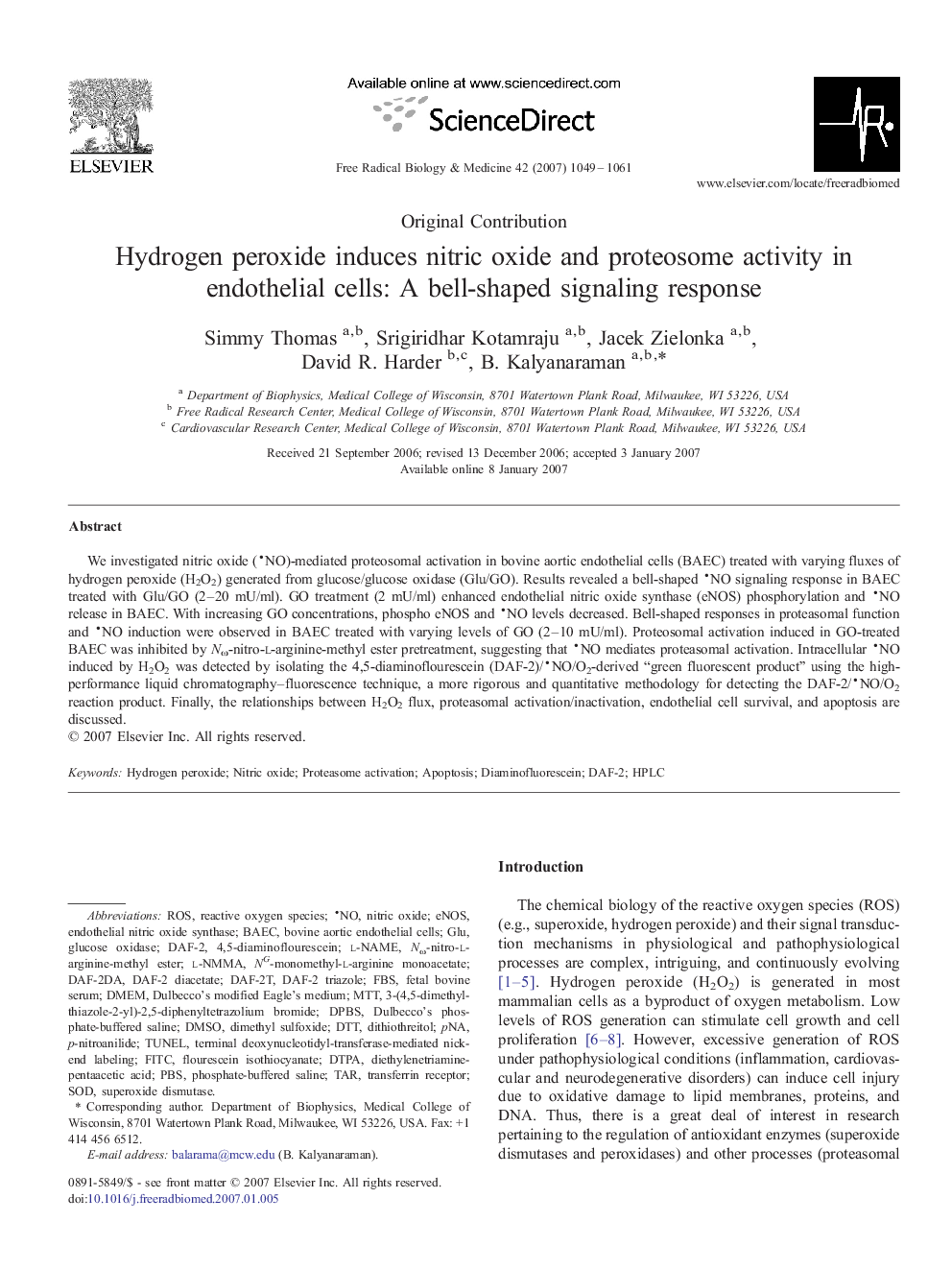| Article ID | Journal | Published Year | Pages | File Type |
|---|---|---|---|---|
| 1911707 | Free Radical Biology and Medicine | 2007 | 13 Pages |
We investigated nitric oxide (NO)-mediated proteosomal activation in bovine aortic endothelial cells (BAEC) treated with varying fluxes of hydrogen peroxide (H2O2) generated from glucose/glucose oxidase (Glu/GO). Results revealed a bell-shaped NO signaling response in BAEC treated with Glu/GO (2–20 mU/ml). GO treatment (2 mU/ml) enhanced endothelial nitric oxide synthase (eNOS) phosphorylation and NO release in BAEC. With increasing GO concentrations, phospho eNOS and NO levels decreased. Bell-shaped responses in proteasomal function and NO induction were observed in BAEC treated with varying levels of GO (2–10 mU/ml). Proteosomal activation induced in GO-treated BAEC was inhibited by Nω-nitro-l-arginine-methyl ester pretreatment, suggesting that NO mediates proteasomal activation. Intracellular NO induced by H2O2 was detected by isolating the 4,5-diaminoflourescein (DAF-2)/NO/O2-derived “green fluorescent product” using the high-performance liquid chromatography–fluorescence technique, a more rigorous and quantitative methodology for detecting the DAF-2/NO/O2 reaction product. Finally, the relationships between H2O2 flux, proteasomal activation/inactivation, endothelial cell survival, and apoptosis are discussed.
